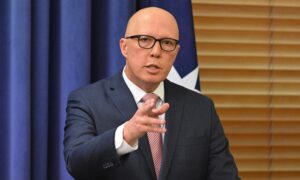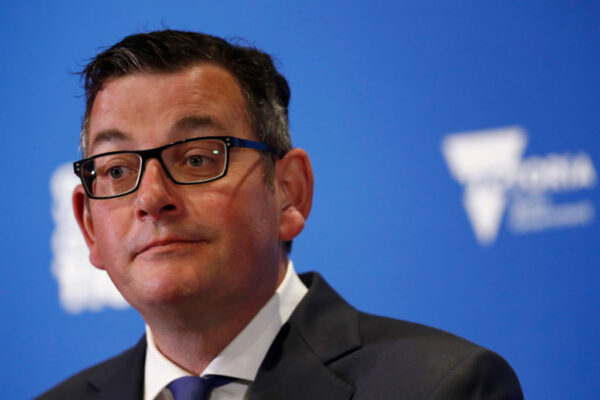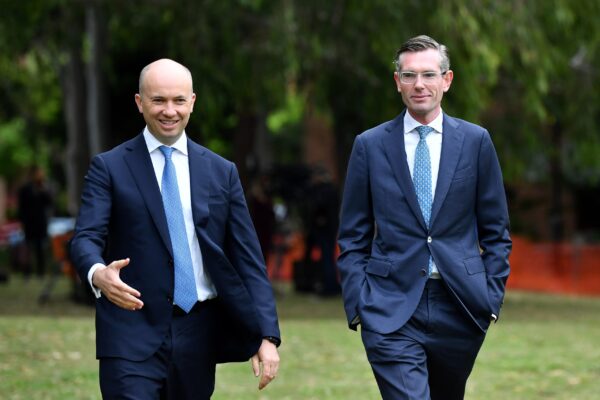What the Liberal Party Must Do to Rebuild
Commentary The loss of the federal seat of Aston by the centre-right Liberal Party is, unfortunately, simply the latest chapter in a saga of defeat and decline. Consider the record. In the past few years, the Liberals have lost government in Western Australia, South Australia, Victoria, and New South Wales. They have also failed to make any real dent in the dominance of the centre-left Labor in Queensland and Victoria. The Liberal Party also lost seats at the 2016 federal election and barely clung on to government in 2019 before losing in 2022. This reflects a much longer trend. Since 1990, Liberal/National Parties have only been in government in the states and territories for an average of 12 years. While this varies between jurisdictions, both state and territory, Liberal/National coalitions have only sat on the Treasury benches for a little over one-third on average of the past 30 years. Only in Western Australia has the Liberal Party been in government for more than 50 percent of the time since 1990. Nationally, the Coalition has been in government for more than 60 percent of the past three decades, but Aston is not a good omen. Indeed, the Victorian state election results in the seats covered by Aston suggested that it would also fall to Labor. Victorian Premier Daniel Andrews speaks to the media in Melbourne, Australia, on Oct. 26, 2021. (Darrian Traynor/Getty Images) All the usual reasons for defeat have been trotted out in the past few days: the Liberals are not left enough on “progressive” issues, and the leadership is not attractive to modern voters, being the most common. That these arguments are made mainly by those on the left suggests that the real reasons lie elsewhere. There are four issues that the party must urgently address if it wishes to regain government. Suppress Factionalism First, it must attract a broad-based membership. Nationally, the proportion of members is less than one in 400 people. Instead of representing the broad cross-section of the community, membership is concentrated increasingly in coteries that seek to control the party. Constitutional reforms of more than a decade ago in many states largely destroyed the local branches, lessening the influence of the remaining members. Factionalism is rife. As former Prime Minister John Howard observed of the party in New South Wales, these factions have become “preselection co-operatives.” A number of serious consequences flow from the declining membership and the rise in factionalism in the contemporary Liberal Party. Former Prime Minister of Australia John Howard attends the state memorial service for the late former Australian PM Bob Hawke, in Sydney, Australia, on June 14, 2019. (Mark Metcalfe/Getty Images) First, the quality of candidates has fallen. Many people who would make good members of Parliament shy away from the invitation, often citing factionalism and social media intrusion as their main reasons. As a result, candidates for preselection become experts in counting the internal numbers but often have little real-world experience. There are some notable exceptions, but too often, parliaments now comprise managerial careerists in all parties. As Howard writes, “within the Parliament elected in 2016, 49 percent of Liberal MPs had previously worked in state or federal politics—as staffers, party officials or corporate affairs employees of companies involved in political liaison.” Many candidates can’t even add the local kindergarten parents’ group membership to their resume, let alone involvement in a service club or local charity! A 2014 Review by former Federal Minister David Kemp highlighted one of the party’s most significant issues. “There must be a complete change in how the party goes about its business. It needs to become an organisation facing not inwards but outwards. It needs to become an accessible community organisation, welcoming and open. Liberals need to engage better with each other and with the external world.” The recent national election review by Brian Loughnane and Senator Jane Hume highlighted this problem. “The Liberal Party is not a lobby group or a think tank. It is a political party whose objective is to form a government to advance Australia. To do this, it must be an effective political operation and appeal to the broader Australian community. Unfortunately, self-absorption by narrow sectional and factional interests is increasingly restricting the party’s ability to meet this test, as are inflexible party structures.” Loughnane and Hume publicly condemned the “ineffective and unprofessional behaviour in senior party committees”. They proposed that “the federal executive discuss the role and responsibilities of party executive members and develop a code of conduct to be signed by all candidates wishing to contest senior party positions.” Significantly, they recommended that “after endorsement by the federal executive, the recommended code should be discussed

Commentary
The loss of the federal seat of Aston by the centre-right Liberal Party is, unfortunately, simply the latest chapter in a saga of defeat and decline.
Consider the record. In the past few years, the Liberals have lost government in Western Australia, South Australia, Victoria, and New South Wales.
They have also failed to make any real dent in the dominance of the centre-left Labor in Queensland and Victoria.
The Liberal Party also lost seats at the 2016 federal election and barely clung on to government in 2019 before losing in 2022.
This reflects a much longer trend.
Since 1990, Liberal/National Parties have only been in government in the states and territories for an average of 12 years.
While this varies between jurisdictions, both state and territory, Liberal/National coalitions have only sat on the Treasury benches for a little over one-third on average of the past 30 years.
Only in Western Australia has the Liberal Party been in government for more than 50 percent of the time since 1990.
Nationally, the Coalition has been in government for more than 60 percent of the past three decades, but Aston is not a good omen.
Indeed, the Victorian state election results in the seats covered by Aston suggested that it would also fall to Labor.

All the usual reasons for defeat have been trotted out in the past few days: the Liberals are not left enough on “progressive” issues, and the leadership is not attractive to modern voters, being the most common.
That these arguments are made mainly by those on the left suggests that the real reasons lie elsewhere.
There are four issues that the party must urgently address if it wishes to regain government.
Suppress Factionalism
First, it must attract a broad-based membership. Nationally, the proportion of members is less than one in 400 people. Instead of representing the broad cross-section of the community, membership is concentrated increasingly in coteries that seek to control the party.
Constitutional reforms of more than a decade ago in many states largely destroyed the local branches, lessening the influence of the remaining members. Factionalism is rife.
As former Prime Minister John Howard observed of the party in New South Wales, these factions have become “preselection co-operatives.”
A number of serious consequences flow from the declining membership and the rise in factionalism in the contemporary Liberal Party.

First, the quality of candidates has fallen. Many people who would make good members of Parliament shy away from the invitation, often citing factionalism and social media intrusion as their main reasons.
As a result, candidates for preselection become experts in counting the internal numbers but often have little real-world experience.
There are some notable exceptions, but too often, parliaments now comprise managerial careerists in all parties.
As Howard writes, “within the Parliament elected in 2016, 49 percent of Liberal MPs had previously worked in state or federal politics—as staffers, party officials or corporate affairs employees of companies involved in political liaison.”
Many candidates can’t even add the local kindergarten parents’ group membership to their resume, let alone involvement in a service club or local charity!
A 2014 Review by former Federal Minister David Kemp highlighted one of the party’s most significant issues.
“There must be a complete change in how the party goes about its business. It needs to become an organisation facing not inwards but outwards. It needs to become an accessible community organisation, welcoming and open. Liberals need to engage better with each other and with the external world.”
The recent national election review by Brian Loughnane and Senator Jane Hume highlighted this problem.
“The Liberal Party is not a lobby group or a think tank. It is a political party whose objective is to form a government to advance Australia. To do this, it must be an effective political operation and appeal to the broader Australian community. Unfortunately, self-absorption by narrow sectional and factional interests is increasingly restricting the party’s ability to meet this test, as are inflexible party structures.”
Loughnane and Hume publicly condemned the “ineffective and unprofessional behaviour in senior party committees”. They proposed that “the federal executive discuss the role and responsibilities of party executive members and develop a code of conduct to be signed by all candidates wishing to contest senior party positions.”
Significantly, they recommended that “after endorsement by the federal executive, the recommended code should be discussed and adopted by each state executive.”
This is an admission that the state divisions of the party are incapable of individually implementing the necessary reform.

Structural Reform, Sensible Policy
Secondly, the Liberals must modernise the governance structures of the party. It is troubling that political parties fail to meet modern corporate governance requirements.
The federal executive of the Liberal Party should insist on a modern structure for the state administrative bodies, with a majority of independent, non-executive directors.
There should be clear requirements on these directors for the conduct of the party, the raising of finances, the selection of candidates and the widespread recruitment of members, the average age of whom is now over 70 years.
Few realise that a rapidly ageing party membership is an existential threat to its future.
Under these proposals, party members would continue to vote in preselections and contribute to policy development, but the incentive for factional operatives to manipulate the governance of the party would be significantly diminished if a modern governance structure was implemented.
Thirdly, these changes should ensure that proper internal processes are followed. Too often, for example, have factional operatives on State Administrative Committees manipulated the rules to delay or avoid preselections.
The decline in real-world experience and the concentration on internal party politics also results in more parliamentarians who seem unaware and unconvinced of Liberal Party principles and are unprepared for the hard policy work required to persuade the electorate.
Fourthly, and most importantly, the Liberal Party must return to championing policies based on its values and beliefs instead of merely playing tactical day-to-day politics or, worse, mimicking Labor. As probably the most effective Opposition Leader for many decades, Tony Abbott said recently the consistent lesson of the repeated election losses is “Labor-lite Liberals lose!”
The list of sensible policies is patent: affordable and reliable energy; a reduction of national debt which burdens future generations; policies that uphold the equal rights of all individuals, not the identity of noisy groups; and the ability of all Australians to own their homes are just a few prominent examples.
Views expressed in this article are the opinions of the author and do not necessarily reflect the views of The Epoch Times.












